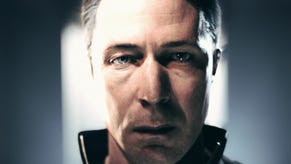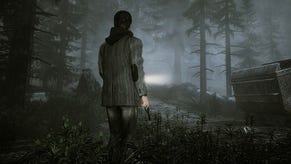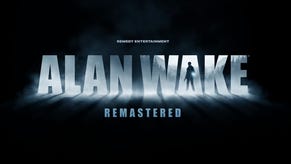Tech Analysis: Alan Wake
Midnight feast.
However, depending on when the game transitioned from open-world to a more linear experience, it's equally likely that in levels like this the faraway elements are generated especially for this scene alone - similar to the way the Uncharted 2 engine occasionally gives the illusion of rendering sandbox environments. Oh for just half an hour of access to an earlier build of the game!
Certainly though, the sense of scale that Alan Wake creates in the final shipping game is phenomenal, which hopefully this video demonstrates.
Playing Alan Wake, it very much gives the impression that during the extended development period the focus of the game changed. The open-world concept disappeared in favour of a "follow the compass point" linear journey with a very strong emphasis on the narrative and the generation of atmosphere. Both are tightly integrated, but while there's an undoubted sense that the tech more than lives up to its end of the deal, the script itself doesn't especially sparkle, and the in-game performances from the characters are nowhere near as engaging as, say, Uncharted 2's.
This is backed by a general stiffness in terms of the animation too, which extends to Alan Wake himself. It's interesting to note that Remedy itself plans on upgrading Alan's face in the forthcoming DLC, but some of the technical innovations seen in Uncharted 2 in blending animations for a more realistic feel would definitely benefit this game.
Going into other more specific visual effects seen in the game, Remedy has done a great job with the motion blur, which combined with the steady frame-rate, produces a very smooth look and feel; the camera-based effect works beautifully: subtly effective but not overtly "noticeable".

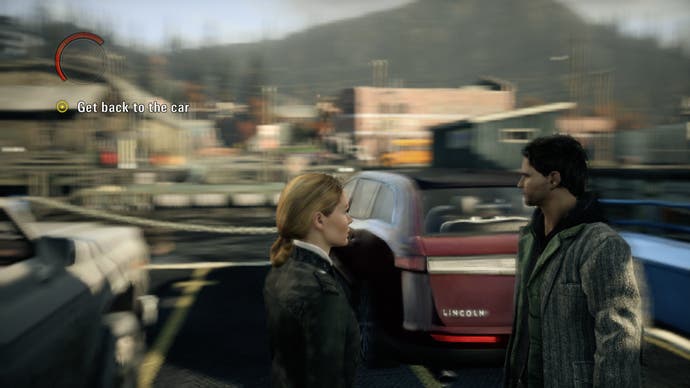
The Remedy engine's brilliant lighting is backed with comprehensive shadow support too, both pre-generated (i.e. "baked") and dynamic. Alan's flashlight and the game's flares are the showcases here, producing well-realised dynamic shadows. The quality of those shadows is a bit of a mixed bag. In outdoor environments, when the shadow is cast on the ground, they work well. Indoors, with shadow cast upon a wall, the low resolution, and the dithering of the penumbra is pretty self-evident. However, the sheer volume of shadows and the consistency of them throughout the game is a clearly impressive achievement.
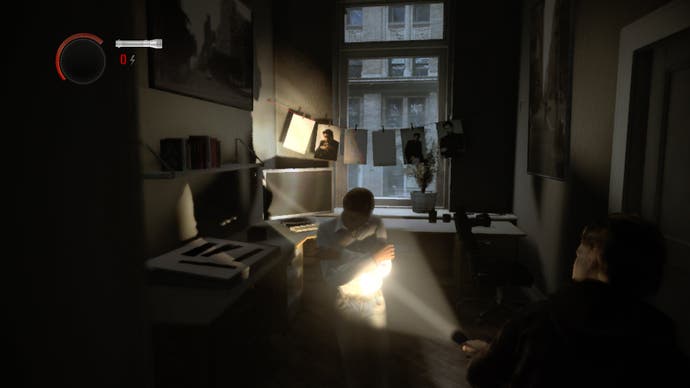
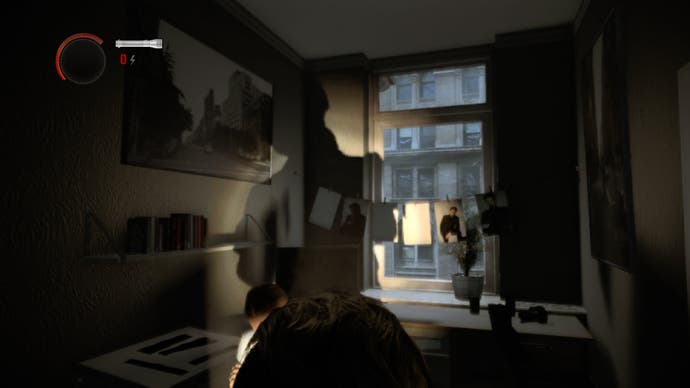

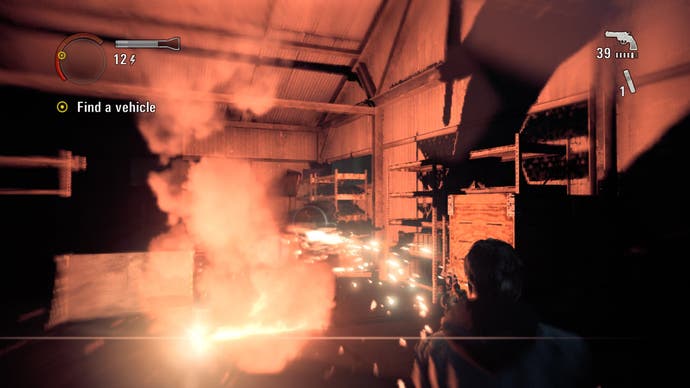
However, for all its state-of-the-art loveliness, you can't help but feel that for a release with this much cleverness invested in the technology, we should have seen more ingenuity in the gameplay itself.
We have an engine here that deals with light and shadow in a way that looks different from just about every other game, yet pretty much the only mechanic available in dealing with the hostiles is in shining a light source (such as your torch) upon them, and then shooting them - or else making use of weaponry that utilises both light and damage elements at the same time, for example, the flare gun. Surely there should have been some far more inventive use of light, perhaps linked to more ingenious uses of the environment?
Think of Battlefield: Bad Company 2. Remember the stage where you use lightning as a cue to fire your sniper rifle, knowing that the sound of your shot will be obscured by the oncoming thunder? That's exactly the kind of thinking that's missing from Alan Wake.
It's undoubtedly the case that Remedy's game features a great physics engine, so seeing the lion's share of the environment kills linked to the ages-old concept of the exploding gas cylinder is a bit of a disappointment. And conversely, for creatures that thrive in darkness, you can't help but feel that a few tricks have been missed in using darkness and shadow to create some genuine "big scare" moments.
The potential is there for gameplay mechanics that really stretch the engine: think of the physics engine in Just Cause 2 and the huge number of gameplay opportunities limited only by the imagination of the player. Remedy's engine surely has the potential to match it, not just on the physics side of things, but also in the usage of light and shadow. In short, it would be great if Alan Wake himself could be seen as a more resourceful, inventive type of hero by giving him the in-game tools to be able to be one.
In closing, we shouldn't lose focus of the fact that Alan Wake is a unique experience on console, technologically ambitious and beautiful to behold. For this reason alone, it's clearly worth serious consideration. But in many ways, Remedy's game reminds us of the original Assassin's Creed: the basic building blocks for a bloody good game are in evidence and the technology is clearly state-of-the-art. However, the comparisons with the Ubisoft game are valid in another way: both have amazing tech, and both fall somewhat short in terms of what the core gameplay experience offers.
The focus with Alan Wake has definitely been about generating atmosphere. In this respect, it works well and the technology more than plays its part with that, but the depth of gameplay to match those elements just feels a touch lacking. This is not to say that Alan Wake is a bad game. It's solid, enjoyable and gripping, as Ellie Gibson wrote in Eurogamer's 7/10 write-up. The visuals, the atmosphere and the story compel you to play through until - like Patrick Stewart - you've seen everything.
Going forward, Alan Wake's story will continue with a range of DLC episodes. While we'd like to think that they will push the envelope, the chances are that these will follow the basic mechanics of the shipping game. But hopefully there's an Alan Wake sequel already in pre-production: one where innovative, inventive use of the state-of-the-art technology will result in an equally fresh and original gameplay experience.
Remedy's Markus Maki, posting on the official Alan Wake forums, has some interesting insight on where the team can go forward technically.
"The graphics side is pretty well optimised, but I think we can still push for more in the future especially on the CPU side but also on the GPU," Maki writes.
"We already have a few bigger changes in mind that could free up as much as 30 per cent processing time, but they were too big to do for Alan Wake 1. But it's not all about improving the engine. We also learned what kind of content works and looks the best with the engine we have, and can, from day one, make cooler stuff in the future. Expect the downloadable content to benefit from this already somewhat."
Alan Wake is due out for Xbox 360 on 14th May.


